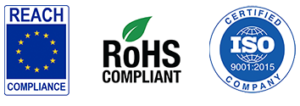Toughening Epoxy Adhesives Epoxy adhesives are used globally due to their high-performance properties. Epoxy adhesives are targeted towards applications that require a high modulus, high-temperature resistance, chemical resistance, and moisture resistance. Epoxies also have excellent bond strength to many metals, ceramics, glass, and even other polymers. Epoxy adhesives, however, can have too high of a hardness and can be too rigid for many applications. This can be due to dissimilar…
rob_bdcApril 22, 2015


